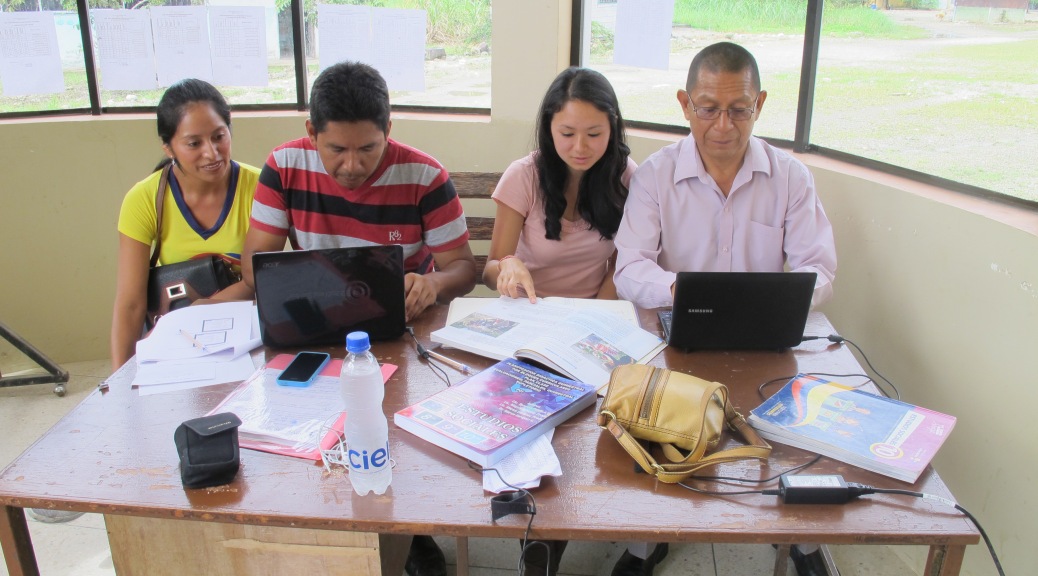Through the duration of my project in Tena, I had the privilege of receiving the input and assistance of two brilliant individuals, Abigail Hindson and Kyle Hess.
Abigail Hindson is a third-year student at Lawrence University studying anthropology, but I first met Abigail three years ago in this same beautiful plot of jungle while we were Global Citizen Year Fellows. Abigail’s experience in Ecuador proved invaluable in setting up the Canvas pages with instructors at the Unidad Educativa Bilingüe Pano (UEBP), as she was able to pull from personal experiences within the context of the local culture to give thoughtful insight. Per her recommendations, we were able to work separately with a few key instructors who showed heightened interest in order to develop a core group of leaders that would sustain the project past our time in country. Additionally, her prior experiences with education in the region helped to organize class segments into portions that could be effectively converted into online modules.
In contrast, Kyle Hess is one of my classmates at UCLA, and this trip was his first experience in Ecuador. Having Kyle with me was largely helpful because he was able to view things from a fresh perspective. It was often easier for him to point out obvious improvements that had been overlooked. For example, he was able to help with some crucial translations that were forgotten in our assumption of local understanding.
With their varied backgrounds and in-field experiences, Abigail and Kyle proved to be key ingredients in sharing digital literacy tools with UEBP. Above all, they demonstrated that working among “amigos” always makes the process easier.






